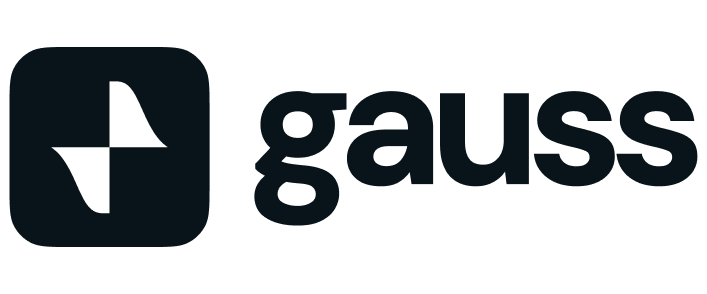Demystifying Student Loan Repayment Options: A Comprehensive Guide to Managing Your Student Debt

Student loans are a crucial financial tool that allows many individuals to pursue higher education. However, the repayment process can be overwhelming and confusing. In this comprehensive guide, we will break down the various student loan repayment options available to help you effectively manage your student debt.
When it comes to repaying your student loans, there are two main types: federal student loans and private student loans. Federal student loans are provided by the government, while private student loans are offered by banks, credit unions, and other financial institutions. It's important to understand the differences between these two types of loans as they come with different repayment options and benefits.
Federal Student Loan Repayment PlansIncome-Driven Repayment Plans
One of the most popular options for federal student loan repayment is an income-driven repayment plan. These plans take into account your income and family size to determine your monthly payment amount. There are four main income-driven repayment plans:
- Income-Based Repayment (IBR) Plan: This plan caps your monthly payment at a percentage of your discretionary income, typically 10% to 15%. After 20 or 25 years of qualifying payments, any remaining balance may be forgiven.
- Pay As You Earn (PAYE) Plan: This plan also caps your monthly payment at a percentage of your discretionary income, but the cap is generally lower than with the IBR plan. After 20 years of qualifying payments, any remaining balance may be forgiven.
- Revised Pay As You Earn (REPAYE) Plan: Similar to PAYE, this plan caps your monthly payment at a percentage of your discretionary income. However, the repayment period is extended to 25 years for undergraduate loans and 30 years for graduate loans.
- Income-Contingent Repayment (ICR) Plan: This plan calculates your monthly payment based on either 20% of your discretionary income or what you would pay on a fixed 12-year repayment plan, adjusted for your income. After 25 years of qualifying payments, any remaining balance may be forgiven.
Standard Repayment Plan
If you prefer a fixed monthly payment that will pay off your loans in a shorter period of time, the standard repayment plan may be suitable for you. Under this plan, your monthly payments will be a fixed amount for up to 10 years, depending on the total amount of your loans. While the monthly payments may be higher compared to income-driven plans, you will pay off your loans faster and save on interest in the long run.
Graduated Repayment Plan
The graduated repayment plan is another option for federal student loan repayment. This plan starts with lower monthly payments that increase every two years. The idea behind this plan is that your income will increase over time, making it easier for you to afford higher payments in the future. The repayment period is typically 10 years, but it can be extended up to 30 years if you consolidate your loans.
Extended Repayment Plan
If you have a large amount of federal student loan debt, the extended repayment plan may be worth considering. This plan allows you to extend your repayment period up to 25 years, resulting in lower monthly payments. However, keep in mind that while your monthly payments may be more manageable, you will end up paying more interest over the life of the loan.
Public Service Loan Forgiveness (PSLF) Program
The Public Service Loan Forgiveness (PSLF) program is a federal program that forgives the remaining balance on your federal student loans after you have made 120 qualifying monthly payments while working full-time for a qualifying employer. This program is designed to encourage individuals to pursue careers in public service, such as government or nonprofit work. To be eligible for PSLF, you must have Direct Loans and be enrolled in an income-driven repayment plan.
It's important to note that the PSLF program has specific requirements, and not all loans and employment qualify. Therefore, it's essential to thoroughly understand the program's guidelines and fulfill all necessary criteria to ensure eligibility for loan forgiveness.
Loan Consolidation
Loan consolidation is a process that allows you to combine multiple federal student loans into a single loan. This can simplify your repayment process by having only one monthly payment to manage. Additionally, loan consolidation may also provide access to certain federal loan repayment options that were not previously available to you.
However, it's important to carefully consider the pros and cons of loan consolidation before making a decision. Consolidating your loans may result in a longer repayment period, which means you may end up paying more in interest over time. Additionally, if you have already made qualifying payments towards loan forgiveness programs, such as PSLF, consolidating your loans may reset your progress.
Private Student Loan Repayment Options
Private student loans come with their own set of repayment options, which vary depending on the lender and loan terms. Unlike federal student loans, private lenders are not required to offer income-driven repayment plans or loan forgiveness programs. However, they may offer other repayment options, such as:
- Immediate Repayment: With this option, you start making full monthly payments as soon as the loan is disbursed. This can help you save on interest over time, but be prepared to manage higher monthly payments.
- Interest-Only Repayment: Under this repayment option, you make monthly payments that cover only the interest charges on your loan while you are in school and for a grace period after graduation. Once the grace period ends, you will start making full principal and interest payments.
- Deferred Repayment: With deferred repayment, you have the option to postpone making payments on your loan while you are in school and for a grace period after graduation. This can provide temporary relief, but keep in mind that interest will continue to accrue during this time.It's important to carefully review the terms and conditions of your private student loans and understand the repayment options available to you. If you are facing financial hardship, contact your lender to explore any potential repayment assistance programs they may offer.
Tips for Managing Student Loan Repayment
Managing student loan repayment can be challenging, but with proper planning and strategies, you can navigate the process effectively. Here are some tips to help you manage your student loan repayment:
- Create a Budget: Start by creating a budget that includes your monthly loan payments. This will help you prioritize your expenses and ensure that you can afford your loan payments.
- Explore Repayment Options: Familiarize yourself with the different repayment options available to you. Research and compare the benefits and drawbacks of each plan to find the one that best fits your financial situation.
- Make Extra Payments: If you have the means, consider making extra payments towards your student loans. This can help you pay off your loans faster and save on interest in the long run.
- Keep an Eye on Interest Rates: Stay informed about the interest rates on your student loans. If you have variable interest rates, consider refinancing your loans to secure a lower rate.
- Seek Professional Advice: If you're feeling overwhelmed or unsure about your student loan repayment options, consider seeking professional advice from a financial planner or student loan counselor. They can provide personalized guidance based on your specific circumstances.
Resources for Student Loan Repayment Assistance
Navigating the student loan repayment process can be challenging, but you don't have to do it alone. There are various resources available to help you understand your options and find assistance. Here are some useful resources for student loan repayment assistance:
- Federal Student Aid website: The official website of the U.S. Department of Education provides comprehensive information on federal student loan repayment options, forgiveness programs, and other resources.
- Student Loan Repayment Assistance Programs: Many states and employers offer loan repayment assistance programs to help individuals manage their student debt. Research programs that may be available to you based on your location and profession.
- Loan Servicer Websites: If you have federal student loans, your loan servicer's website can be a valuable resource for managing your loans. They often provide tools, calculators, and information on repayment options specific to your loans.
- Nonprofit Organizations: There are several nonprofit organizations dedicated to helping individuals understand and manage their student loans. These organizations often offer free resources, webinars, and counseling services.
Conclusion
Managing student loan repayment can feel like a daunting task, but with the right knowledge and strategies, you can take control of your student debt. Understanding the various federal and private student loan repayment options available to you is crucial in developing a repayment plan that suits your financial situation. Remember to explore income-driven repayment plans, consider loan consolidation carefully, and utilize resources for assistance. By taking proactive steps to manage your student loans, you can work towards a debt-free future and financial stability.
Do you have unpaid credit cards?
Gauss money can help pay off your credit cards easily. Pay off any credit card balance using a low-interest credit line from Gauss. You’ll save with a lower APR and you can pay off balances faster. Gauss offers no annual fees, no origination fees, and no fees of any kind. Check out Gauss for a lower APR today to maximize your credit cards.
Additionally, use tools like the credit card payoff calculator to visualize your progress overtime, and get insights into how much you should put towards your debt to achieve your debt free date. Our debt payoff calculator and debt tracker is 100% free to use via our website or our mobile app.
